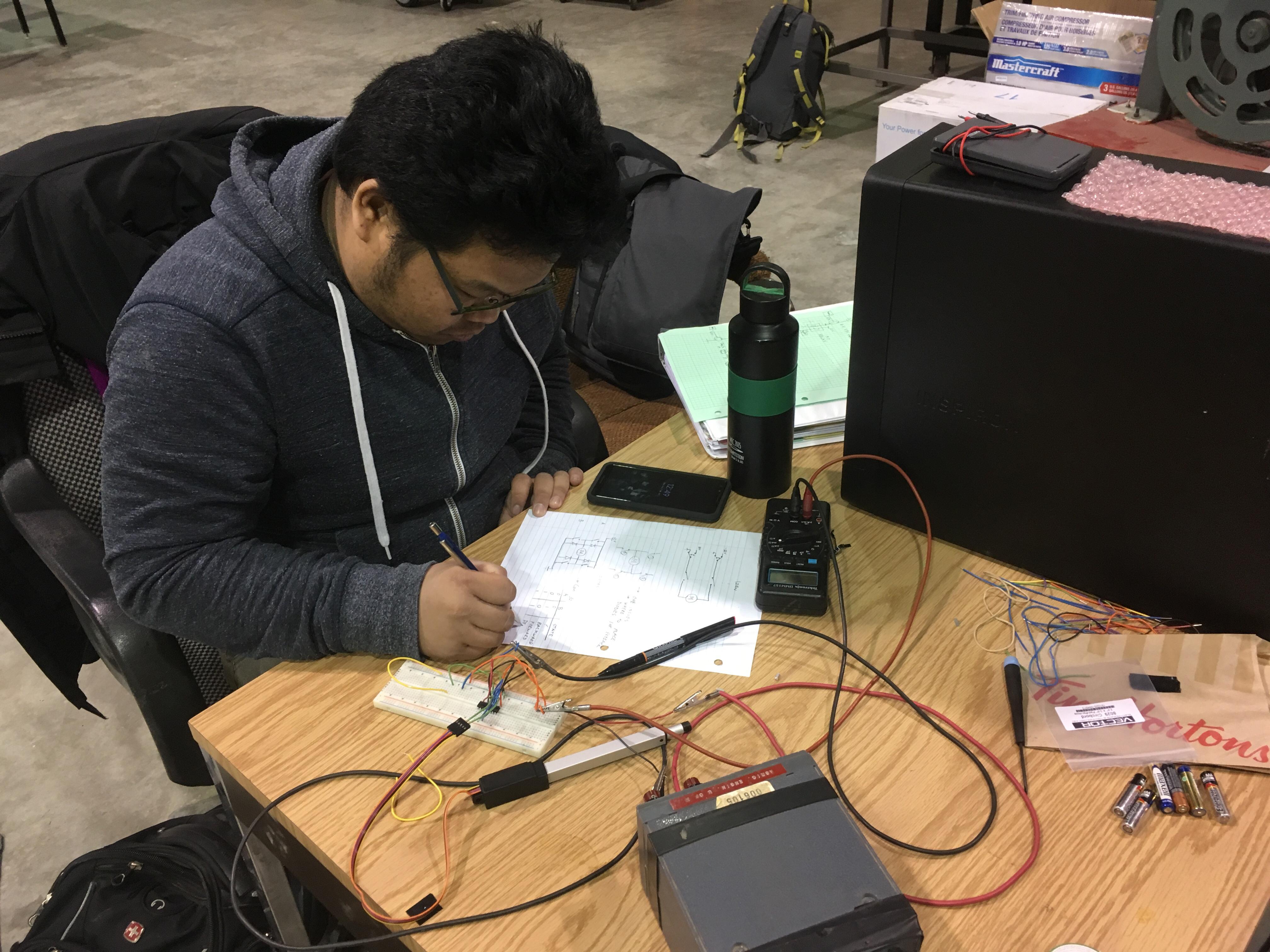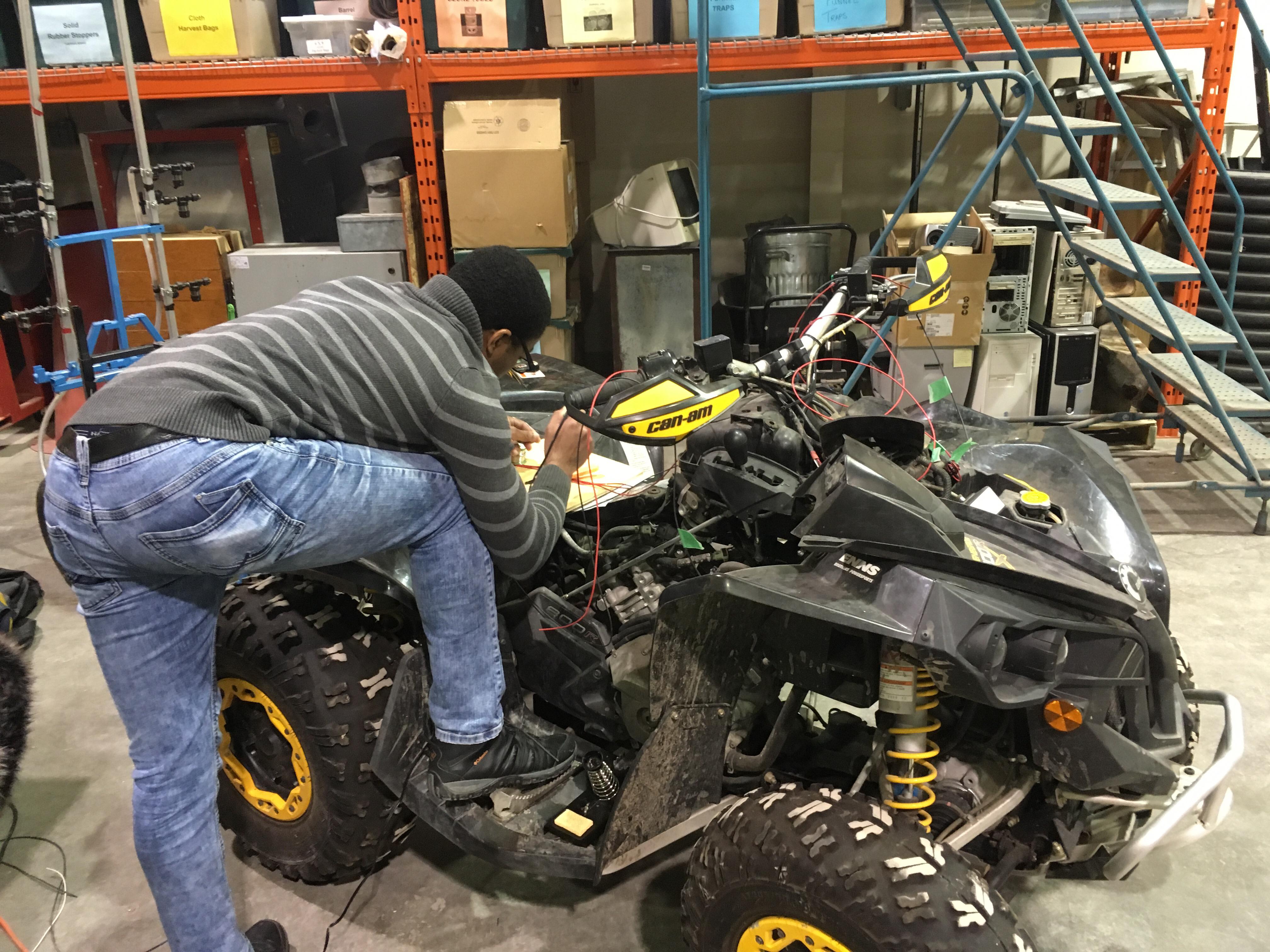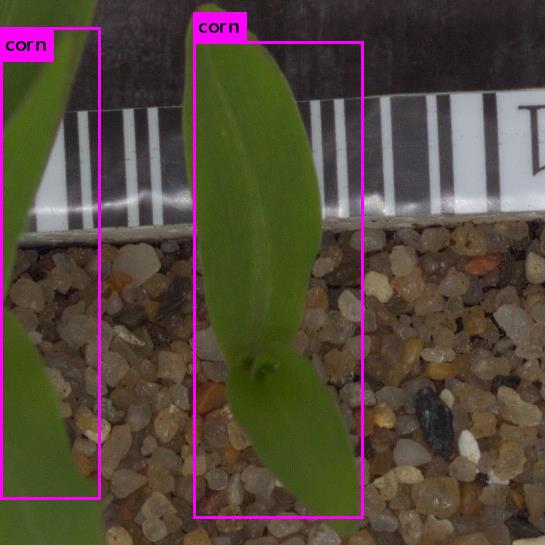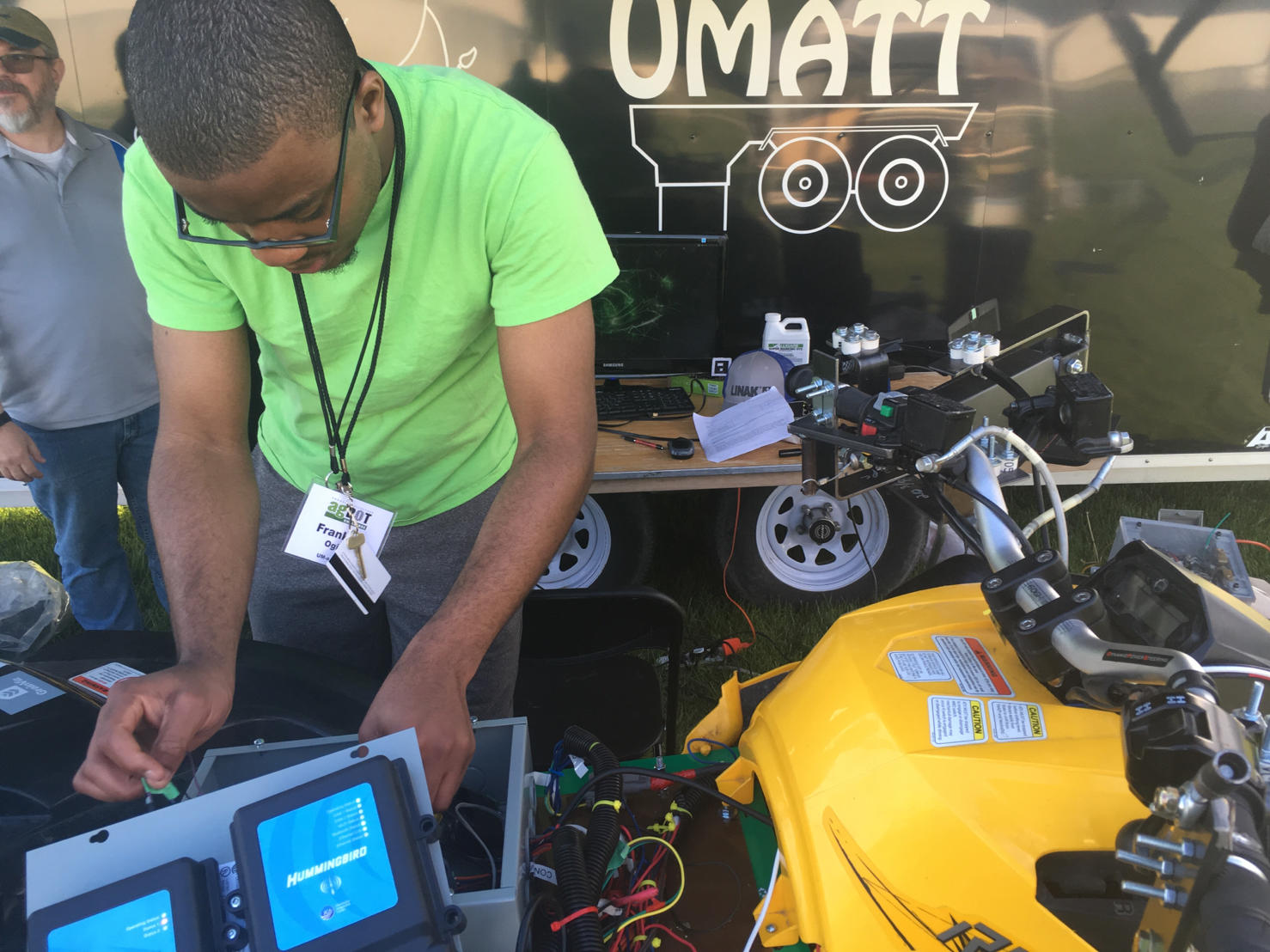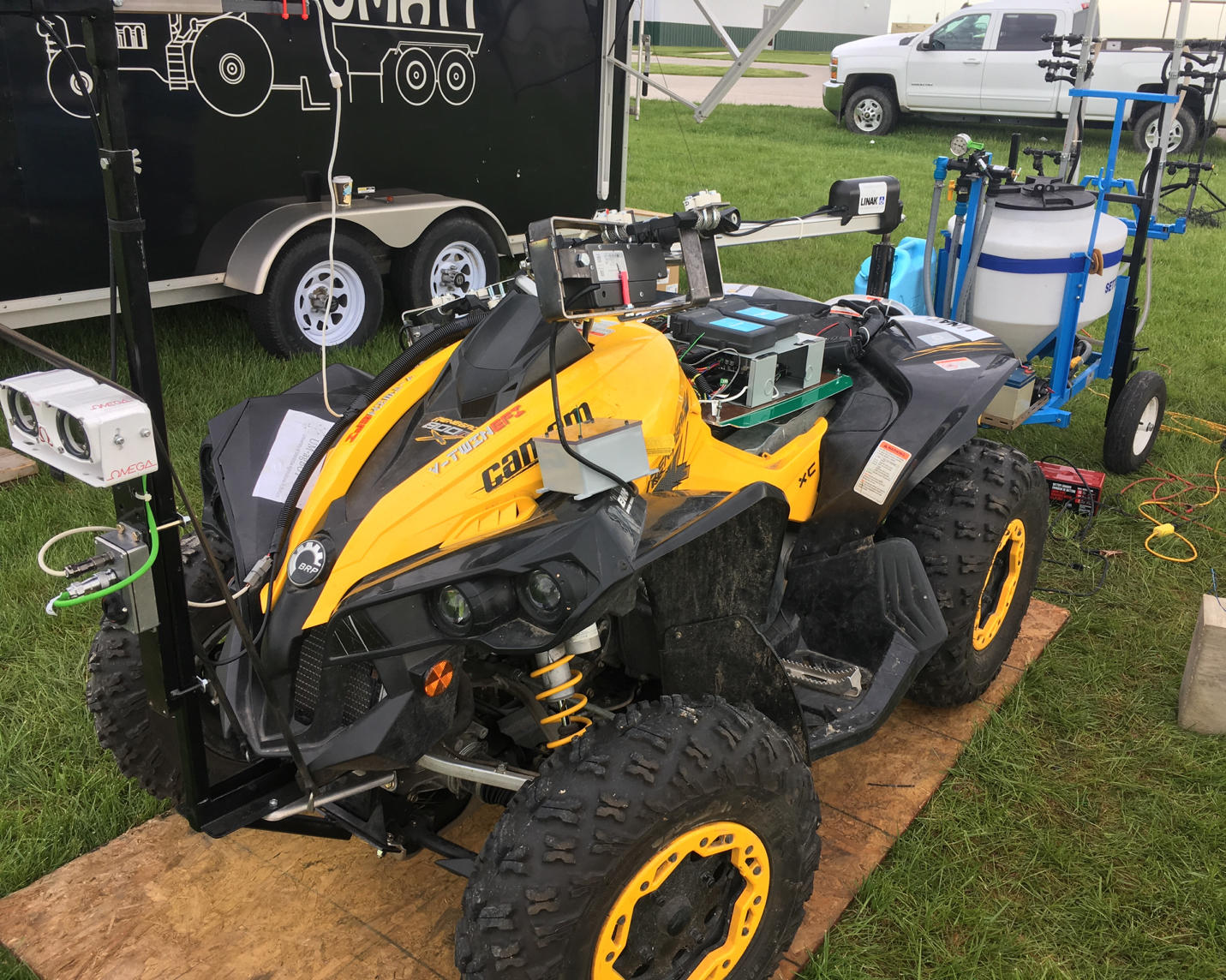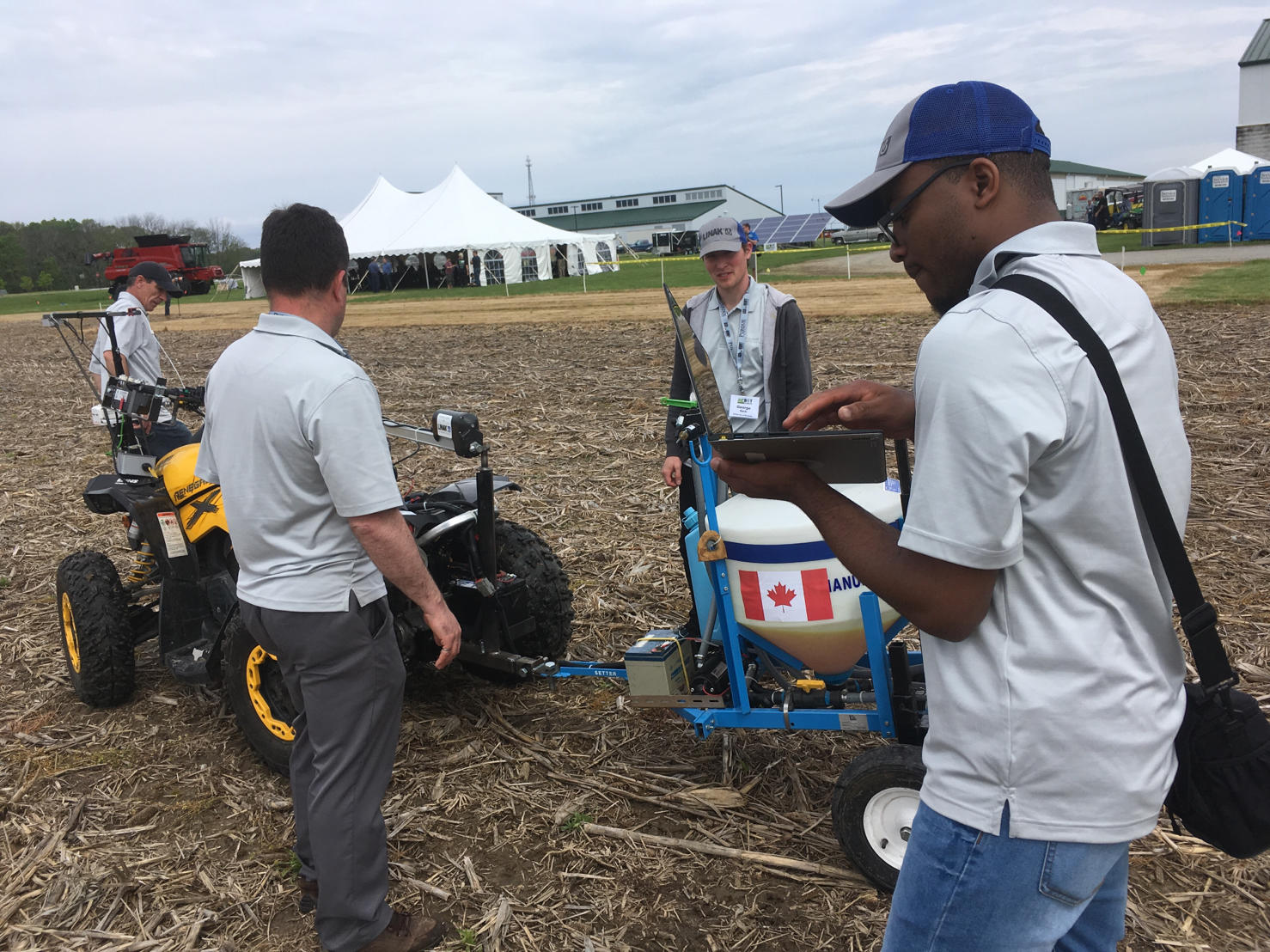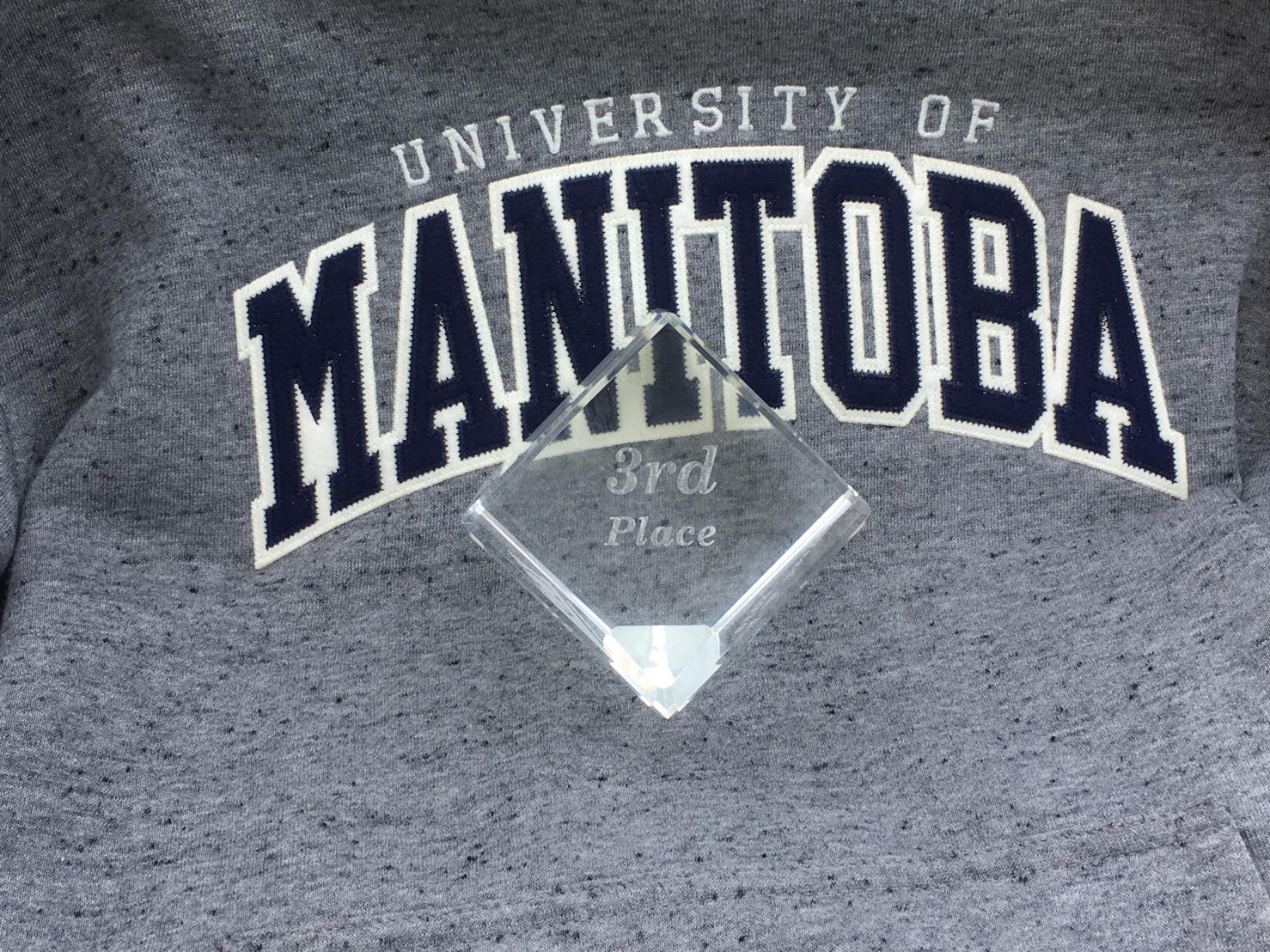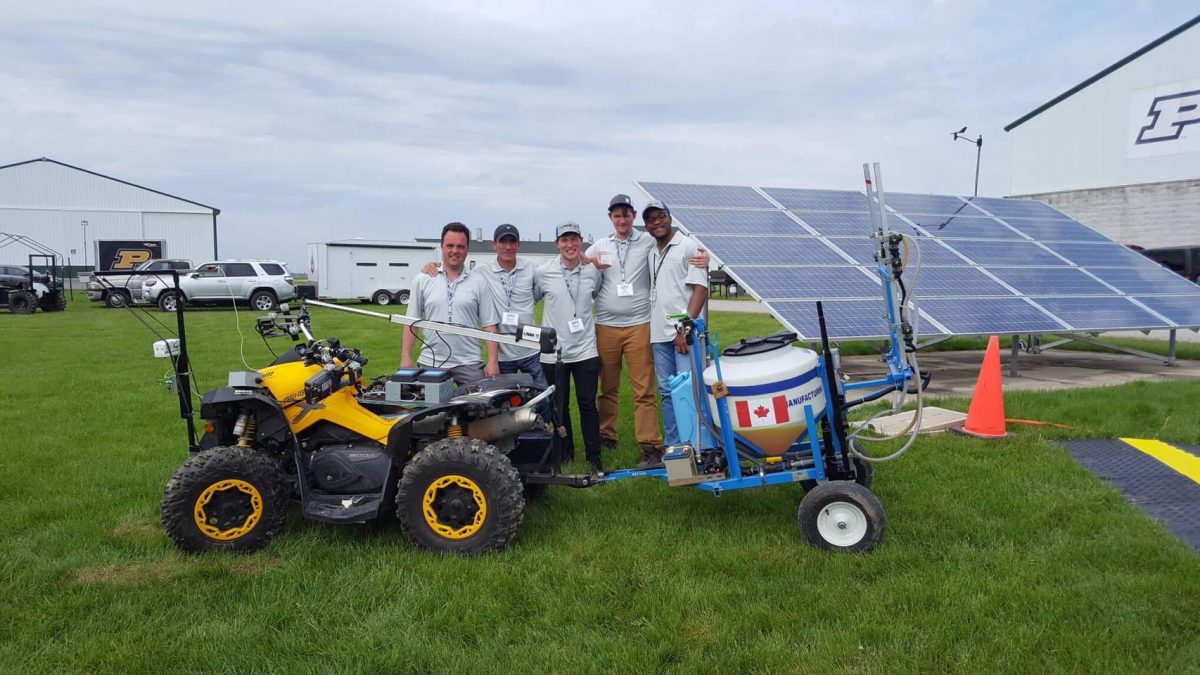
Left to right: Dr. Jason Morrison (advisor), Marcel Lehman (coach and bio-eng technician for the Department of Biosystems Engineering), George Dyck (actuation lead), Eric Hawley (team captain), and Franklin Ogidi (machine vision lead).
Robots battle to the death…of weeds
The University of Manitoba’s Agricultural Robotics Team (UM-agBOT) captured third place at a recent international competition where teams were challenged to create autonomous robots capable of performing agricultural tasks.
UM-agBOT was formed this academic year by biosystems engineering students Eric Hawley, Cody Listoe, Franklin Ogidi and George Dyck. They were advised by Dr. Jason Morrison and assisted by technician Marcel Lehman, both from the Department of Biosystems Engineering. They were the only Canadian team out of 10 competitors.
The 2019 agBOT Challenge was held May 16-18 in Lafayette, IN, and was hosted by Purdue Agriculture and Gerrish Farms. Founded in 2015 by Steve Gerrish, owner of Gerrish Farms in Rockville and his daughter Rachel Gerrish, the event was part of an effort to bring awareness to the need for high-speed broadband in rural areas.
In addition to a technology expo, the agBOT Challenge features open competitions (industry or students) that promote innovation in technology and agriculture.
UM-agBOT took part in the Weed and Feed Competition, which challenges teams to create self-driving machines capable of identifying plants while navigating a cornfield. The vehicles kill weeds and fertilize crops as needed.
Team captain Eric Hawley says he was proud of how far the team was able to push their vision forward.
“I started the team with a shoebox-sized garden variety prototype and quickly found that my peers and local industry were just as passionate about pushing the boundaries of technology in agriculture as I was,” he said.
The team built an autonomous platform using an ATV that could drive itself between rows and selectively spray fertilizer on corn and pesticide on several different types of weeds, all while streaming results back to a base station computer. The UM-agBOT used machine vision to help with navigation and plant detection and a Robot Operating System (ROS) to control the machine.
“ROS is a middleware that allows us to resolve communication issues, has extensive libraries, and is accessible through the programming language Python. We used it to solve communication protocols but still had to build our own custom algorithms for detection, navigation, and control,” said Hawley.
Teams were scored in the areas of mechanics, software, innovative solution, and execution. The judges included representatives from agricultural and tech firms John Deere, Case IH, Bats, DOT and Corteva.
The UM-agBOT project received support from JCA Electronics, 151 Research, Linak, Omega, the Department of Biosystems Engineering, the Faculty of Engineering, and the Faculty of Agricultural and Food Sciences.
“We really couldn’t have done it without all the support from our partners at home and abroad” said Hawley.
The team’s third place achievement has already drawn a lot of attention on their Linkedin account (UM-agBOT) from industry, students, and local producers. For next year, Hawley says the team is placing more emphasis on student recruitment, machine vision, and training engineering and agriculture students on key concepts in programming for automation.
“Recruitment is always open,” he said.
Contact ogidif@myumanitoba.ca to join the team.







